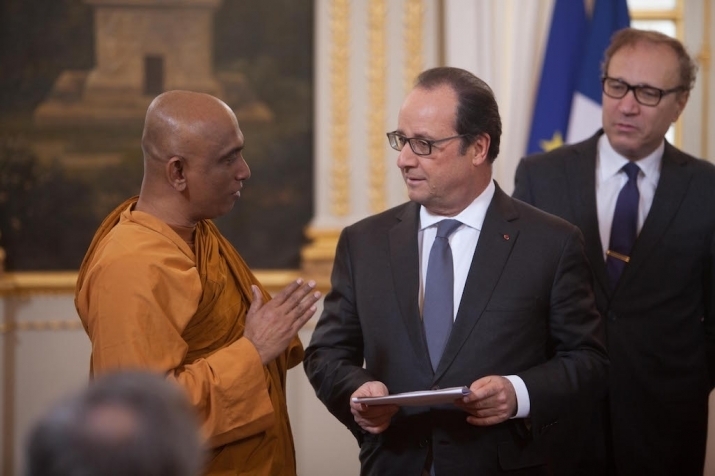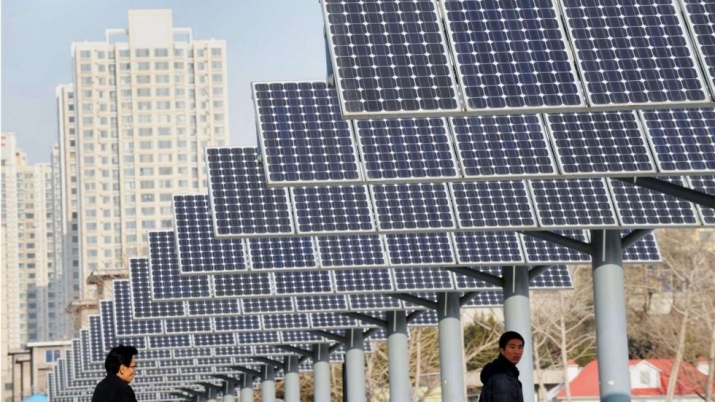FEATURES|THEMES|Commentary
Buddhistdoor View: Mitigating and Managing Local and Global Ecological Crises
 Breath of Gaia. From mythologian.net
Breath of Gaia. From mythologian.netWith the exception of climate change deniers and those with a vested interest in rejecting any notion that the global ecology is under immense pressure from human activity, it should be evident that Earth is undergoing an environmental crisis. It is a crisis of multifaceted dimensions on a truly planetary scale, such as resource depletion, deforestation, climate change, and biodiversity loss.
Yet many of us do not react to this planetary crisis with the same urgency as we might to other emergencies—for example, geopolitical conflicts or social justice issues. It seems commonplace that so much more is written and covered in the global media about US President Donald Trump’s travel bans targeting Muslim-majority countries than the ongoing ecological crisis. To be sure, alarmism and hyperbole sometimes deafen people to the message of environmental writers, scientists, or activists. However, we should be under no illusions as to why there is a discrepancy between the scale of the crisis and the scale of the global community’s response. This disconnect reflects a way of perceiving the world that does not correspond to the way things actually are.
A planetary crisis is unfolding around us, yet because we cannot “feel” it immediately affecting our homes and livelihoods, policymakers and wider society are unable to muster the proportionate concern to match the scale of the crisis. The different priorities of developed and developing economies have been a constant tension at climate change summits. Emerging nations, surging ahead in economic growth, see no reason to listen to pontificating from wealthier economies that have only recently realized the price of mass industrialization. Meanwhile, countries such as Bangladesh and Mauritius are already seeing chunks of their landmasses disappear under rising waters.
 Venerable Rathana Thera presenting the Buddhist Statement on Climate Change to French president François Hollande on 10 December 2015. Image courtesy of Sean Hawkey, World Council of Churches
Venerable Rathana Thera presenting the Buddhist Statement on Climate Change to French president François Hollande on 10 December 2015. Image courtesy of Sean Hawkey, World Council of ChurchesThe disconnect is evocative of the belief that we have a self and that things in this world are graspable and solid, when, with insight, we can see that the opposite is actually true. We have no self as part of the three marks of existence (anicca, anatta, and dukkha), although we behave and act in the world—consciously or unconsciously—in complete defiance of this reality. Just as the Buddha said that no-self was the most counterintuitive truth of his teaching and that we simply cannot “buy it” at an emotional level, the ecological crisis that is unfolding before our eyes does not feel apparent enough to spur us to dramatic action. Parents will throw their bodies in front of their child if their offspring’s life is threatened, but such a threat is far more immediate and the need for drastic action is far clearer. This is not the case with the ecological crisis, which renders the task of managing it even more formidable.
Many of us just do not feel that ecological problems affect our daily lives in a way that directly compromises our ability to work, play, and rest. Especially if we live in affluent cities or urban communities that are relatively disconnected from nature. It could be said that the preoccupations and neuroses of modern life (the struggle of work, financial and family worries, and countless distractions, such as materialist craving for pretty things and status) keep us focused our own wellbeing and not that of future generations—the human imagination struggles to empathize or stretch that far ahead. In addition, world governments and big businesses are, for a host of reasons, unable to change direction quickly. There is no single party to blame for how we have come to this tipping point.
Today, management means mitigation and healing as we are long past prevention. The wounds have already been inflicted on Mother Earth and more are being inflicted with every passing day. There are three interconnected forces that could drive the innovative and effective management of the planet’s ecological crisis; government and business initiatives, for all their imperfections, are already making a difference. For example, the solar industry is booming thanks to a combination of government support and private entrepreneurship in China and the US. In 2016, we saw growth of 305 gigawatts of solar power capacity globally, up from a mere 50 gigawatts in 2010, and essentially zero in 2000. China was responsible for nearly half of this growth in 2016, and Asia encouragingly made up two thirds of the new capacity. The global transition to renewable energy could not come quickly enough.
 Phra Mae Thorani (bottom right), the Southeast Asian goddess of the earth, repulses Mara's demons prior to the Buddha's enlightenment. From photographypainter.wordpress.com
Phra Mae Thorani (bottom right), the Southeast Asian goddess of the earth, repulses Mara's demons prior to the Buddha's enlightenment. From photographypainter.wordpress.comPrivate-public collaboration is a common model for crisis management, but the grassroots—the yet-to-be-mobilized masses of concerned citizenry—is a third force that could be an additional incentive for governments and businesses. We need to activate and sustain decentralized movements that capture a sense of personal investment in addressing ecological problems, albeit oriented towards local ecosystems and environments. To do this we should look to an increasingly vocal source in ecological activism: religion.
The recent interest in climate change taken by many religions is an indication of the shifting sense of responsibility from mere “sustainability”—a term of utility that technically allows for exploitation—to “stewardship,” a much more spiritual term. Religious communities are also often more local and decentralized than governments, allowing them to move more nimbly to address local ecological problems. An excellent example of a localized environmental project is the Buddhist-driven conservation sanctuary called Palri Buddha Park in Bhutan, established to protect the region from companies that seek to exploit the local natural resources and woodlands.
Another way of conceiving “localization” is to address issues in a specific culture, for instance, the advocacy for animal rights and welfare in Sri Lanka by Dharma Voices for Animals, while in East Asia, campaigners are drawing attention to problems caused by the custom of releasing animals destined for slaughter into the wild (known as life, or mercy, release). It may well be that the various religions should cooperate on shared environmental work, as indicated by the Vatican’s message to Buddhists during Vesak in 2016.*
 A row of solar power panels installed for public electricity supply in Shenyang, Liaoning province, northeast China. From scmp.com
A row of solar power panels installed for public electricity supply in Shenyang, Liaoning province, northeast China. From scmp.comReligious leaders are banking on the hope that, at least for their followers, their voice can provide a moral spur to action in a way that governments and political bodies cannot invoke. This is not to say that government bodies should shy away from increased collaboration with religious groups—we would suggest the opposite. If religious groups can somehow work with governments and the for-profit sector to coordinate focused campaigns addressing specific concerns in local ecosystems—whether in a small village in India, or a catchment near an industrial town in the US—we might see a kind of energetic synergy and intellectual “pooling” that could redefine collaborative crisis management. This is a long shot and bringing together religion, government, and business comes with many difficulties. But while feasibility is a concern, the scale of the crisis requires that proposed solutions are relatively bold.
Yet, how can humanity resolve its fundamental bind: the basic discrepancy between our perception of the world and fundamental reality? This is the heart of our problem. Whether we are discussing ecological or existential crises, humanity would be in a much better place if this divide were bridged. There is no satisfactory answer apart from attaining insight. So we struggle on.
* Vatican Extends a Call to Arms to Buddhists on Vesak Day to Address Eco-crisis
See more
Solar power growth leaps 50% thanks to US and China (The Guardian)
Related features from Buddhistdoor Global
Buddhistdoor View: The Dharma’s Place in the Global Climate Change Crisis
Buddhist Perspectives on Sustainable Economic Development
Conscientious Compassion—Bhikkhu Bodhi on Climate Change, Social Justice, and Saving the World
Time to Stand Up: An Engaged Buddhist Manifesto for our Earth – The Buddha’s Life and Message through Feminine Eyes – Book Review
Palri Buddha Park - A Conservation Project in East Bhutan
Reinstating Animal Rights in Sri Lanka
Related news from Buddhistdoor Global
Pristine Mountain Ecosystems Under Threat from Climate change, Study Shows
Arctic Melt Occurring at an Unprecedented Rate, Experts Warn
The Ugly Face of Life Release
Amazon Rainforest Loss at Highest Level Since 2008, Says BrazilTaiwan Temples Forsake Tradition for Environmental Responsibility
Top Buddhists Sign Landmark Statement on Climate Change to Global Leaders














